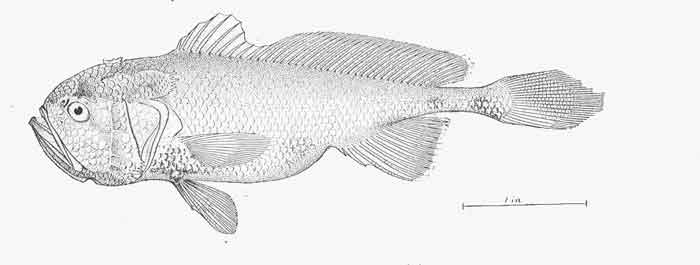Superregnum: Eukaryota
Cladus: Unikonta
Cladus: Opisthokonta
Cladus: Holozoa
Regnum: Animalia
Subregnum: Eumetazoa
Cladus: Bilateria
Cladus: Nephrozoa
Superphylum: Deuterostomia
Phylum: Chordata
Subphylum: Vertebrata
Infraphylum: Gnathostomata
Megaclassis: Osteichthyes
Superclassis/Classis: Actinopterygii
Classis/Subclassis: Actinopteri
Subclassis/Infraclassis: Neopterygii
Infraclassis: Teleostei
Megacohors: Osteoglossocephalai
Supercohors: Clupeocephala
Cohors: Euteleosteomorpha
Subcohors: Neoteleostei
Infracohors: Eurypterygia
Sectio: Ctenosquamata
Subsectio: Acanthomorphata
Divisio/Superordo: Acanthopterygii
Subdivisio: Percomorphaceae
Series: Eupercaria
Ordo: Perciformes
Subordo: Percoidei
Superfamilia: Percoidea
Familia: Sciaenidae
Genus: Collichthys
Species: C. lucidus – C. niveatus
Name
Collichthys Günther, 1860
References
Collichthys – Taxon details on Integrated Taxonomic Information System (ITIS).
Collichthys species list in FishBase,
Froese, R. & Pauly, D. (eds.) 2024. FishBase. World Wide Web electronic publication, www.fishbase.org, version 02/2024.
Vernacular names

Collichthys lucidus
Collichthys is a genus of marine ray-finned fish belonging to the family Sciaenidae, the drums and croakers. The fishes in the genus are found in the Western Pacific Ocean off the coasts of China, Japan, the Korean Peninsula and Vietnam.
Taxonomy
Collichthys was first proposed as a genus in 1860 by the German-born British herpetologist and ichthyologist Albert Günther with Sciaena lucida, a species described in 1844 by Sir John Richardson from "China Seas", being designated as the type species, either in 1867 by Günther or by David Starr Jordan and Carl H. Eigenmann in 1889.[1][2] This genus has been placed in the subfamily Otolithinae by some workers,[3] but the 5th edition of Fishes of the World does not recognise subfamilies within the Sciaenidae which it places in the order Acanthuriformes.[4]
Etymology
Collichthys prefeixes the Greek word for fish, ichthys, with a word Günther did not explain but which is probably derived from kolla, meaning "glue". The type species was used in China to produce isinglass.[5] Both species in this genus have been given the common name bighead croaker.[6][7]
Species
Collichthys has two recognised species within it:[8]
Collichthys lucidus (Richardson, 1844)
Collichthys niveatus Jordan & Starks, 1906
Characteristics
Collichthys croakers are moderately sized with C. lucidus reaching a maximum published total length of 19.8 cm (7.8 in) and C. niveatus reaching 15 cm (5.9 in).[8]
Distribution and habitat
Collichthys croakers are found in the Western Pacific Ocean. C. lucidus occurs in estuarine habitats over sand and mud substrates down to depths of 90 m (300 ft) from Kyushu in Japan south to the South China Sea.[9] C. niveatus has a more restricted range being found in the Yellow Sea and East China Sea in the sublittoral zone at depths down to 80 m (260 ft) over sandy and muddy bottoms.[10]
Fisheries and conservation
Collichthys croakers are important food fishes, especially in China and, although there is a danger of overfishing, the IUCN has classified both species as Least Concern.[6][7]
References
Eschmeyer, William N.; Fricke, Ron & van der Laan, Richard (eds.). "Genera in the family Sciaenidae". Catalog of Fishes. California Academy of Sciences. Retrieved 25 April 2023.
Eschmeyer, William N.; Fricke, Ron & van der Laan, Richard (eds.). "Species in the genus Collichthys". Catalog of Fishes. California Academy of Sciences. Retrieved 26 April 2023.
Kunio Sasaki (1989). "Phylogeny of the family Sciaenidae, with notes on its Zoogeography (Teleostei, Peciformes)" (PDF). Memoirs of the Faculty of Fishes Hokkaido University. 36 (1–2): 1–137.
J. S. Nelson; T. C. Grande; M. V. H. Wilson (2016). Fishes of the World (5th ed.). Wiley. pp. 497–502. ISBN 978-1-118-34233-6. Archived from the original on 2019-04-08. Retrieved 2023-04-26.
Christopher Scharpf & Kenneth J. Lazara, eds. (9 March 2023). "Series Eupercaria (Incertae sedis): Families Callanthidae, Centrogenyidae, Dinopercidae, Emmelichthyidae, Malacanthidae, Monodactylidae, Moronidae, Parascorpididae, Sciaenidae and Sillagidae". The ETYFish Project Fish Name Etymology Database. Christopher Scharpf and Kenneth J. Lazara. Retrieved 26 April 2023.
Nguyen Van, Q.; Sasaki, K.; Hoshino, K.; et al. (2020). "Collichthys lucidus". IUCN Red List of Threatened Species. 2020: e.T49171768A49225265. doi:10.2305/IUCN.UK.2020-1.RLTS.T49171768A49225265.en. Retrieved 26 April 2023.
Nguyen Van, Q.; Sasaki, K.; Hoshino, K.; et al. (2020). "Collichthys niveatus". IUCN Red List of Threatened Species. 2020: e.T49171849A49233496. doi:10.2305/IUCN.UK.2020-1.RLTS.T49171849A49233496.en. Retrieved 26 April 2023.
Froese, Rainer and Pauly, Daniel, eds. (2023). Species of Collichthys in FishBase. February 2023 version.
Froese, Rainer; Pauly, Daniel (eds.) (2023). "Collichthys lucidus" in FishBase. February 2023 version.
Froese, Rainer; Pauly, Daniel (eds.) (2023). "Collichthys niveatus" in FishBase. February 2023 version.
Retrieved from "http://en.wikipedia.org/"
All text is available under the terms of the GNU Free Documentation License

